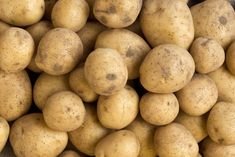Potatoes, often considered a humble staple, have become a vital part of the Chinese diet and economy. In China, the journey of the potato—from farm to table—illustrates the agricultural innovation, cultural significance, and culinary versatility of this beloved tuber potato 中文版. This blog post will explore the various stages of this journey, highlighting how potatoes have transformed the culinary landscape of China.

The Rise of the Potato in China
The potato was introduced to China in the late 16th century, but it wasn’t until the late 19th and early 20th centuries that its cultivation gained momentum. Recognizing its adaptability to diverse climates and soils, Chinese farmers began to embrace the potato as a reliable food source. Today, China is the largest producer of potatoes in the world, contributing significantly to global production.
Cultivation: From Seed to Harvest
The journey of a potato begins in the fields. Farmers typically start with high-quality seed potatoes, selecting disease-resistant varieties that suit their local climate. The planting season usually begins in early spring, with farmers preparing the soil and planting seed potatoes in rows.
Potatoes require careful attention during their growth period, which spans about 70 to 120 days. Farmers must manage water supply, soil health, and pest control to ensure a healthy yield. Modern agricultural practices, including the use of irrigation systems and organic fertilizers, have significantly improved potato yields across the country.
Harvesting: The Excitement of the Yield
As the summer months roll in, farmers eagerly await the harvest season. Harvesting typically occurs in late summer or early fall when the plants begin to die back. This is a labor-intensive process, often involving both manual labor and machinery. Farmers dig up the potatoes, sorting them based on size and quality.
After harvesting, the potatoes are transported to storage facilities, where they are kept in a cool, dark place to maintain freshness. Proper storage is essential to prevent spoilage and extend the shelf life of the potatoes, which can last for several months.
Distribution: From Farms to Markets
Once harvested and stored, potatoes make their way to local markets, supermarkets, and restaurants. The distribution process involves transporting the potatoes across various regions of China. This journey may involve several intermediaries, including wholesalers and retailers, who play a crucial role in connecting farmers with consumers.
In urban areas, potato vendors can be found in bustling markets, selling freshly harvested potatoes alongside other produce. The accessibility of potatoes in these markets highlights their importance in the everyday diet of Chinese consumers.
Culinary Versatility: Potatoes on the Plate
Potatoes are incredibly versatile, featuring prominently in various regional cuisines across China. They can be prepared in numerous ways, from stir-frying and steaming to boiling and baking. Some popular dishes include:
- Stir-Fried Potatoes: Thinly sliced potatoes sautéed with peppers and spices create a flavorful side dish that pairs well with rice.
- Potato Pancakes: Grated potatoes mixed with scallions and pan-fried until crispy are a popular snack in many regions.
- Mashed Potatoes: While not traditional, this Western-style dish has gained popularity, especially in urban areas.
In addition to traditional dishes, innovative chefs are incorporating potatoes into modern culinary creations, such as potato dumplings and gourmet salads, showcasing their adaptability.
Conclusion: The Impact of Potatoes in China
The journey of potatoes from farm to table in China is a testament to the importance of this versatile crop in the nation’s food culture and economy. As consumer preferences evolve, potatoes continue to play a vital role in feeding millions while supporting local farmers and communities.
